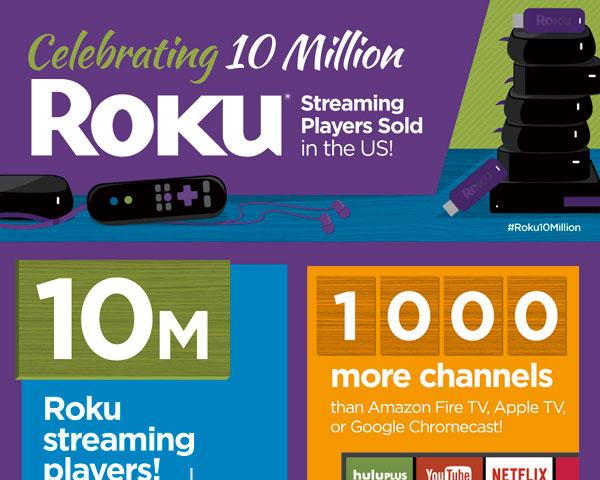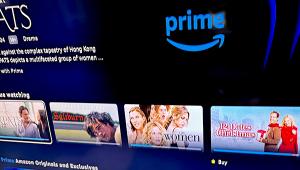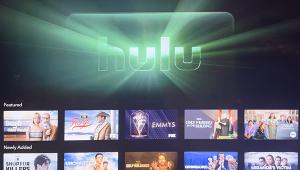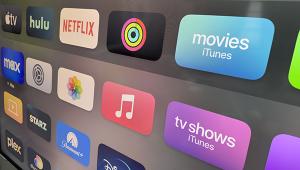Roku: 10 Million Players Sold Since 2008

In the mid-1990s, I remember lunch conversations at the retail electronics store where I worked about a future world where we wouldn’t own any media and it would come, on demand, from the Internet. It would be 10 years before we started to see that seemingly crazy idea become reality. Apple TV was released in March 2007. Videos had to be streamed or downloaded and saved on the Apple TV from a computer on the same home network. Movies and TV shows had to be purchased individually. The idea of a subscription-based unlimited streaming option came when Netflix added the feature to its previously DVD-only rental service. That was 2007, a year before Roku, the Netflix streaming box, came to market.
The first Roku didn’t have menus. Instead, users would choose movies on the Netflix website. I tested each Roku model. The early models had issues with buffering and unacceptable picture quality. Still, Apple TV and the Vudu streaming box (also released in May 2008) were excellent performers.
It wasn’t until the Roku XS model in 2010, that the picture and sound sound quality was equal to that of Apple TV and other competitors. By the time the Roku 3 was released, its quality could meet or beat that of any other media player and it was reasonably priced. Its processor is five times faster than the Roku 2 XS so it quickly navigates through menus and is better at loading streaming video than most other players now available.
According to Roku’s infographic, there are currently more than 1,800 channels available for the Roku boxes, dongles, and the Hisense Roku TV. That is a 1,000 more channels—other manufacturers call them “apps” or “services”—than any other streaming player. To be fair, a number of those channels are niche channels devoted to specific groups. Nonetheless, Roku offers a wide range of entertainment including a channel for its old hardware competitor, Vudu, now available only as a streaming app.
There is nothing that a Roku player can’t do. It has apps for streaming media from libraries on a home network, including Plex, Playon, and its own DLNA media streamer. It has apps to watch live TV including TWC-Time Warner Cable, Sling Player, and Simple.tv. For TV and cable shows, there are Hulu Plus, HBO-Go, and Showtime Anytime channels. And it has Amazon Instant Video with Prime as well as Netflix for unlimited streaming channels.
Roku’s grid and carousel menus are consistent in every channel making it relatively easy to use. It’s not surprising to learn from the NPD report that the aggregate of Roku users stream 37 million hours per week to their Roku devices. That’s twice the number of hours streamed by any of the other top players. The study reported that Apple TV users stream 15 million hours, Chromecast users stream 12 million hours, and Amazon Fire TV users are on for 6 million hours per week (not bad for a newcomer). Compare those numbers to just over three years ago when Roku had 1 million viewers. According the Roku inforaphic, viewers have watched a cumulative 5 billion hours since 2008.
Yes, there have been more than 20 million Apple TVs sold, but that number is worldwide. When you consider Roku is a small company, its numbers are impressive. Roku deserves its celebration. It has consistently improved its product and offers more streaming options than any other player. When you give people what they want, and make it easy for them to use, they will use it. And, if Roku’s claims are accurate, they have the proof.
























































